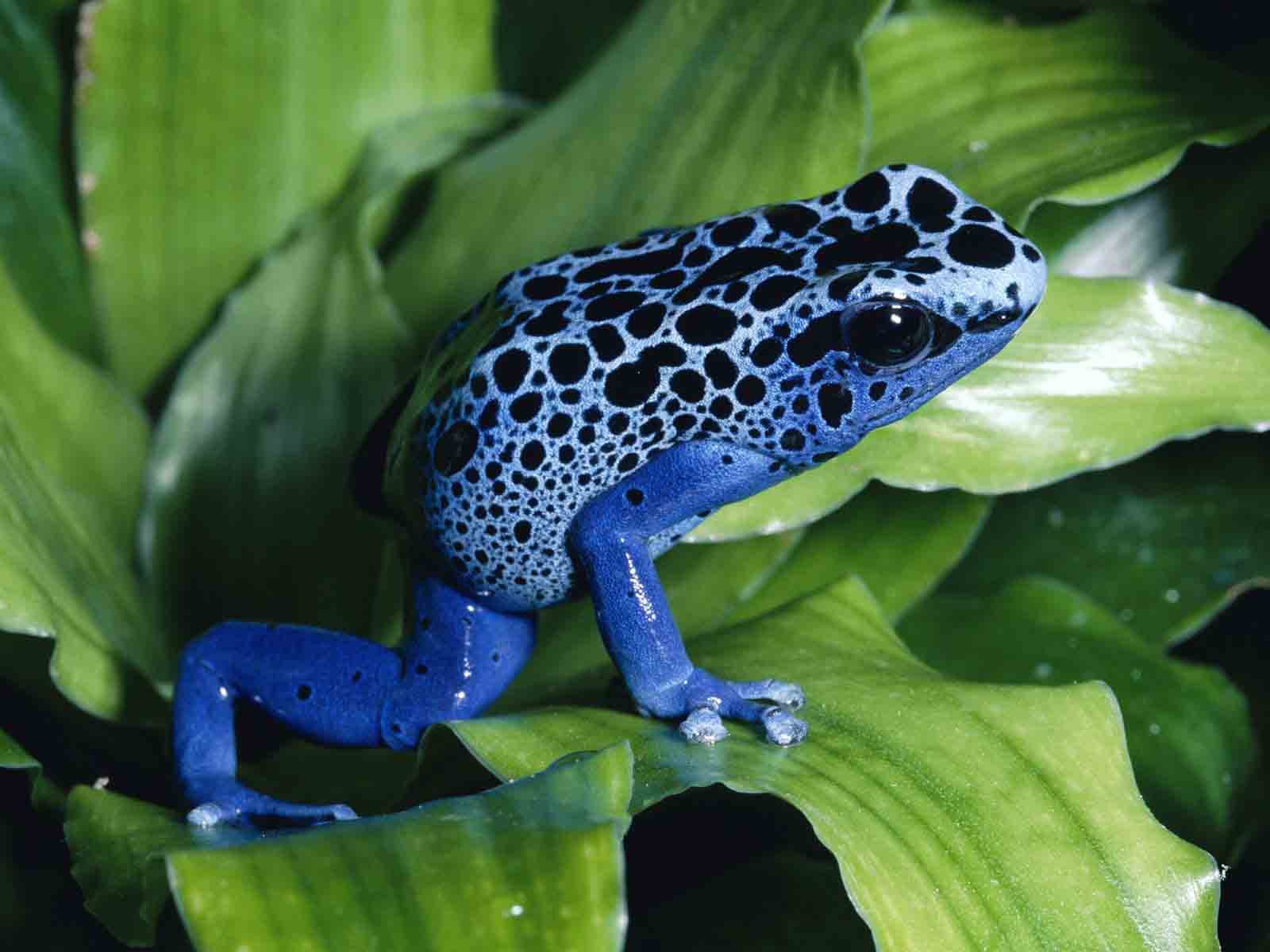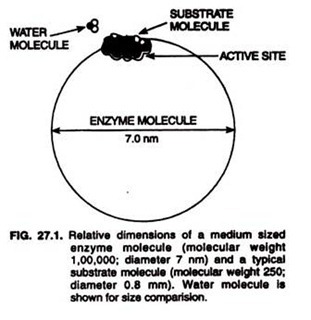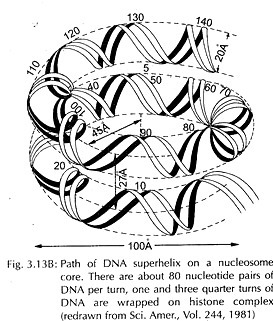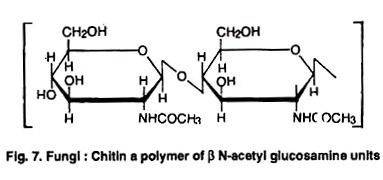Development of Foetal Membranes in Amphioxus and Frog !
In vertebrate embryonic development only form a part of the egg or of cleavage mass of cells forms the actual embryo, while other parts lying outside the embryonic territory develop into extra-embryonic regions, called embryonic or foetal membranes.
Embryonic membranes are auxiliary organs, which have arisen partly for protection of the embryo, and more especially to provide for its nutrition, respiration and excretion until the independent existence is attained.
Contents
Development of Foetal Membranes in Amphioxus:
After the appearance of the blastocoel, the embryo consists of a hollow ball like structure having a peripheral layer of cells surrounding a centrally placed cavity. The cells of this layer are different in shape and size.
Animal pole region cells are smaller and lower vegetal pole region cells are larger. Large ventral cells become columnar and wedge-shaped. They elongate and widen on their inner surface. Vegetal region pushes in towards the animal pole and forms a cup-like structure, which obliterates the cavity, blastocoel.
This future archenteron communicates with the exterior through the blastopore. Outside ectoderm and inside endoderm are continuous at the lips of the blastopore. Embryo develops rapidly to free swimming larval stages and remains immersed in water.
They need no auxiliary aids other than a supply of yolk, sufficient to last until independent life can be carried on. Yolk is contained in larger endodermal cells that make up the thick floor of the gut.
Development of Foetal Membranes in Frog:
The fully formed yolk plug is situated on the ventral side of the gastrula and later it comes to lie in a position, which will be the posterior side of the embryo. This happens due to the rotation of the entire gastrula inside the vitelline membrane.
Rim of the blastopore moves over the surface of the vegetal region, the latter is drawn inside and rotates, so that after the end of gastrulation, it comes to lie in the ventral part of the internally newly formed cavity, the archenteron.
The formation of three germ layers, ectoderm mesoderm and endoderm takes place:
Ectoderm:
At the end of gastrulation, the epiboly movements result in immense increase of the presumptive ectoderm and the nervous system on the surface of the embryo. Mesoderm and endoderm forming cells move inwards.
The expansion of the ectoderm is an active process and these cells expand in all directions but the nervous system forming cells expand only in the longitudinal direction, i.e. towards the blastopore. Whole nervous system area in such a way changes its shape and becomes oval.
Notochord:
The notochord rolls over the dorsal lip of the blastopore into the interior and becomes stretched along the dorsal side of the archenteron forming the mid-dorsal strip of the archenteron roof.
Mesoderm:
The prechordal plate, which lies just below the presumptive notochord, is the first mesoderm to invaginate. Most of the mesoderm invaginates into the interior by rolling over the lateral and ventral lips of the blastopore.
Mesoderm penetrates inside between the outer ectoderm and inner endoderm. Notochordal and the mesodermal material at this stage are in the form of a continuous epithelial sheet known as chorda-mesodermal mantle.
Three different views have been propounded regarding the formation of mesoderm in frog:
1. First Theory:
Rugh (1951) and others proposed that the endoderm and the chorda-mesoderm surround the archenteron. Following pattern is observed for the layer formation: Ectoderm and endoderm are continuous at the blastoporal lips and the ectoderm and endoderm all along the blastopore form an angle. This angle faces the blastocoel and is circular.
Cells near this angle proliferate (they multiply and extend inwards between the ectoderm and endoderm), and spread to fill the blastocoelic space. This is the new mesoderm layer. As the blastopore is circular the mesoderm is formed as a circular layer. Its mid dorsal length is now called as chorda-mesoderm. Here chorda-mesoderm does not form the roof of the archenteron, but remains above the endoderm. Endoderm does not split to form the mesoderm.
2. Second Theory:
According to McEwen (1957) and others, the lateral hypoblast splits into two layers- outer and inner layers. Outer layer is the lateral mesoderm and the inner one is the lateral endoderm. This splitting does not take place at the lip of the blastopore, where the epiblast and the hypoblast are continuous. Dorsally the roof of the archenteron, which is a thick, multicellular band of hypoblast, cells splits a little later.
This band splits into an upper mesoderm and lower endoderm with a gap in between. In the meantime the split in the lateral hypoblast proceeds dorsally to join the gap between the split roof of the archenteron. Thus, upper endoderm and lateral endoderm become continuous. Archenteron now has a wall of endoderm all round.
3. Third theory:
According to Balinsky (1981) and others, the roof of the archenteron is formed by the chorda-mesoderm and prospective mesodermal and prospective endodermal cells form the sides and bottom of this. This lateral and ventral part of the archenteric wall splits into two layers one on the ectodermal and the other on the archenteric cavity sides.
The first towards the ectoderm is the mesoderm and the other towards the archenteron is the endoderm. Both of these layers are continuous dorsally with the chorda-mesoderm. The chorda-mesoderm and mesoderm together are called the chorda-mesodermal mantle.
Splitting of the entire mesoderm does not take place at the same time. It starts at the postero-dorsal part of the archenteron wall and the split extends ventrally and also anteriorly. The chorda-mesoderm does not take part in the split.
Among these three views regarding the formation of mesoderm in frog, the first two are not widely accepted by many workers as the third.
Endoderm:
The presumptive endoderm lies partly in the vegetative region and partly in the animal pole region. These two parts invaginate in different manners and thus the endoderm has dual properties, it invaginates and spreads. Only a small superficial layer of the endoderm surrounding the archenteron is capable of expansion, the remainder is yolk laden and passive.
Development of Foetal Membranes in Chick:
In chick, the presence of an enormous amount of yolk and embryonic life to be spent within a shell is correlated with the development of extra-embryonic membranes. Original blastoderm is a small disc, which spreads by peripheral expansion and eventually covers the entire surface of the egg.
But only the most central region (area pellucida) is directly connected with the formation of the embryo proper. All the remainder of the blastoderm (area opaca) is extra-embryonic and it is this portion that furnishes most of the foetal membranes.
These sacs are composite structures, which involve two germ layers. The amnion and chorion are composed of extra-embryonic ectoderm and somatic layer of mesoderm while the yolk sac and allantois are composed of extra-embryonic endoderm and splanchnic layer of mesoderm separated by a space which is extra-embryonic coelom (Fig. 1).
Development of yolk-sac:
With the expansion of the blastoderm, the extra-embryonic splanchnopleure continues to spread over the yolk mass and eventually encloses the yolk in large measures and becomes yolk sac. Further, splanchnopleure is fold to establish a walled digestive tract or gut in the body of the embryo.
The middle of the gut though remains open to yolk at its lower side and at this level the walls of the yolk-sac remain continuous with the walls of the gut by a narrow yolk-stalk, but the yolk food reserves are not transmitted to the embryo by the yolk route.
Yolk is digested or made soluble for absorption by the endodermal lining of yolk and transported to the embryo by vitelline vein (Fig. 2). In older embryos the epithelium of the yolk sac penetrates deep into the yolk and forms a series of foldings, which greatly increase its surface area for absorption. Yolk sac like the liver serves as a place of origin of blood cells and also performs biochemical functions, which are later taken over by the liver.
During development the albumin loses water, becomes more viscous and rapidly decreases in volume. Growth of the allantois forces the albumin toward the distal end of the yolk sac (Fig. 2 C). Albumin is encompassed by the yolk sac, which is absorbed and transferred by way of the extra-embryonic circulation to the embryo.
By the end of incubation period, usually on the 19th day, the remains of the yolk-sac slip through the navel into the belly of the embryo, where the contents are completely absorbed within first six days after hatching and the body wall closes behind it.
Additional Information
Development of amnion and chorion:
The amnion and chorion are developed simultaneously. Appraximately after 30 hours of incubation, the extra-embryonic somatopleure is elevated over the embryo by a folding process consisting essentially of a doubling of the somatopleure upon itself.
The initial elevation is over the head end of the embryo, producing a double somatopleuric hood, called cephalic amniotic fold. As the cephalic amniotic fold gradually extends backward, its caudally extending side limbs called lateral amniotic folds arch over the embryo from each side to be joined finally by a similar fold or elevation over the tail, the caudal amniotic fold.
All these folds ultimately converge to encase the embryo in two sheets of somatopleure from all sides. Region of union of amniotic folds is called seroamniotic connection. Further, the inner somatopleuric sheet becomes the amnion and the outer one, the chorion.
The cavity between the amnion and the embryo is lined by ectoderm and is termed as the amniotic cavity. On the other hand, the cavity lying between the amnion and chorion is the chorionic cavity and it remains lined by mesoderm of somatopleure and splanchnopleure which is actually the extra-embryonic coelom.
Functions of amnion and chorion:
The developing embryo lies in fluid filled amniotic cavity. The salty amniotic fluid does all that is necessary to prevent desiccation. Fluid of the amniotic cavity is an efficient shock absorber and protects the embryo from possible concussions.
Unstriped muscle fibers develop in the mesoderm of the amnion on the fifth day and produce waves of contraction, rocking the embryo gently, thus preventing its adhesion to various embryonic membranes or to the shell or from friction against it and giving no chance of stagnation of blood vessels.
Formation of the amniotic cavity has a slightly negative effect (Balinsky, 1970). It removes the embryo from the surface of the egg and thus from the source of oxygen. The chorion provides an additional protective umbrella over the embryo, and later joins the allantois and serves as a respiratory organ.
Development of allantois:
About the third day of incubation, the region of the future floor of hindgut begins to bulge out as precocious urinary bladder, the allantois. Its outgrowth consists of endoderm with splanchnic or visceral mesoderm layer converting it from the outside. It grows rapidly and penetrates into the extra-embryonic coelom.
Distal part of the allantois expands and remains connected with the hind gut of the embryo by means of a narrow allantoic stalk. When the body folds contract, separating the embryo from the extra-embryonic parts, the allantoic stalk is enclosed together with the stalk of the yolk sac, forming an umbilical cord.
Distal part of the allantois becomes flattened and penetrates between the amnion and yolk sac on one side and the chorion on the other side. By the middle of the incubation period, the allantois spreads over the complete surface of the egg underneath the chorion. Soon the mesoderm of allantois and chorion unite to form a single mesodermal layer called chorio-allantois.
In the meantime, the expanding chrio-allantois bursts through the vitelline membrane of the egg and pushes outwards toward the shell membrane. Progressively, it envelops the albumin and becomes a sac filled with albumin and is called as the albumin sac. It aids on the absorption of water and albumin.
Blood vessels network develops on the external surface of the allantois, communicating with the embryo proper through the allantoic stalk and umbilical cord. This communication continues until the young chick breaks the eggshell and begins to breathe the surrounding air. Then, the umbilical vessels close, the circulation ceases and the allantois dries up and separates from the body of the young chick.
Functions of the allantois:
Allantois is the storehouse of nitrogenous wastes such as insoluble uric acid formed by the breakdown of proteins and other substances. These wastes formed in the embryo are passed down into the hind gut near the base of the Wolffian ducts, and from here they pass into the allantois.
Allantois also functions as embryonic ‘lung’ through which oxygen and carbon dioxide are exchanged. Allantoic circulation absorbs calcium from the shell and passes it on to the embryo for bone growth.
Development of Foetal Membranes in Mammals:
The developing embryos of rabbit and other eutherian mammals are provided with four foetal or extra-embryonic membranes namely, amnion, chorion, allantois and yolk sac as in chick. But in marsupial and placental mammals, embryo depends on the mother for food and oxygen and elimination of its own wastes.
The foetal membranes begin to develop while the contact with the uterine wall is being established. Foetal membranes differ markedly with that of chick in the mode of their formation and also in their morphology. Different extra embryonic membranes of mammals develop in the following manner.
Development of amnion and chorion:
Development of amnion and chorion starts after gastrulation and neurulation in the form of folds of somatopleure (somatic mesoderm and trophoblasts or ectoderm), called as amniotic folds. These folds arising from the anterior or cephalic end of the embryo are the head folds and those arising from the caudal or tail end are the tail folds.
Both these folds grow over the embryo and fuse with each other at the mid-dorsal part of the embryo. After the fusion of the amniotic folds, the body of the embryo becomes enclosed in the amniotic cavity.
The innermost somatopleure having an inner ectoderm facing the amniotic cavity and an outer mesoderm, becomes amnion, while the outermost somatopleure of amniotic folds having ectoderm at its outermost side and mesoderm at its side forms the chorion (Fig. 3).
In marsupial mammals, rabbit, pig, lemurs and most insectivores the early trophoblast layer overlying the embryonic disc disappears (Fig. 4 A-C). Exposed blastodisc forms a group of formative cells, amniotic folds that develop around the embryo proper in much the same way as in reptiles and birds.
In other more advanced mammals, the amnion is formed by a different method. In them, amniotic cavity makes its appearance as a cleft in the inner cell mass. This method of amnion formation is called as cavitation. The cells, which are above the cavity, correspond to the amniotic folds (chorion and amnion). The cells, which are below the cleft, i.e. between the cleft and the yolk sac, form the embryo proper.
Amniotic fluid (liquor amnii):
Mammalian amniotic fluid is a faintly alkaline watery content of the amniotic sac in which the foetus grows. In man it is a colourless fluid in early pregnancy, gradually becomes pale straw coloured and after thirty-six weeks it becomes cloudy due to the admixture of vernix caseosa, lanungo hairs and foetal epithelial cells.
It is detected at eight weeks of gestation and its amount by term reaches on an average to 600 ml. It is hypotonic to maternal serum with a pH of 7.1 and its specific gravity varies from 1.006-1.081 during early to late pregnancy. The origin of this fluid is partly maternal and partly foetal.
In late pregnancy after mixing of foetal urine, fluid includes proteins (100-500 mg), uric acid (4 mg), creatinine (91.8 mg), and glucose (10-60 mg) per ml. In addition, it also contains lipids, phospholipids, cholesterol, bilirubin, hormones and vitamins. Electrolytes of sodium (560-600 mg) and potassium (280-310 mg) salts are also important inorganic constituents in amniotic fluid.
Amniotic fluid constantly circulates within the amniotic cavity. Its water is completely changed and replaced at an interval of 2-9 hours. Exchange of water occurs between maternal circulation and foetal circulation and that of amniotic fluid at a rate of 300-400 ml/hr.
Functions of amniotic fluid:
Amniotic fluid acts like a cushion to the developing embryo during pregnancy and functions as a shock absorber for the foetus. It equalizes the pressures inside the amniotic cavity; maintains constant temperature around foetus; prevents adhesion between foetal parts and amniotic sac, and thus allows foetal growth and movements.
During labour, amniotic fluid helps in the dilation of the birth passage by the fluid wedge of the bag or amnion and chorionic membranes: protects foetus and placenta from pressure by the contracting uterus and washes the vagina before birth of the young preventing infection.
Chorion develops outgrowths known as trophoblastic villi, which penetrate into the tissue of the uterine wall and form the placenta. These villi greatly increase the absorptive area and play chief part in the embryonic respiration and excretion.
Function of aminion and chorion:
Amnion contains a fluid, the amniotic fluid, which bathes outside of the embryo. Its function is to free the embryo from pressures to permit freedom of motion and to protect the outer surface of the embryo from abrasion. Therefore, amnion may be regarded as a membranous tent around the embryo.
The chorion is the place where exchange of substances occurs between embryonic tissues and the maternal environment. In most of the mammals chorion develops more or less complex outgrowths known as villi which penetrate into the tissues of the uterine wall and greatly increase the surface area of the chorion.
Development of yolk sac:
In mammals, the endoderm spreads over and encloses the cavity of the yolk sac and the extra-embryonic splanchnic layer of mesoderm later on covers the endoderm of yolk sac. The splanchnopleure of the yolk sac has no digestive role like that of chick, but it has a respiratory, haemopoetic (blood cell forming) and storage function.
In most marsupials the wall of yolk sac establishes intimate contact with the uterine wall, forming thereby the yolk sac placenta. However, in most placental mammals, the yolk sac is small and is separated from the chorion by the extra-embryonic coelom (Fig. 4 C).
The embryo remains separated from the yolk mass by body folds and connected with the latter by the yolk stalk. Later, with the gradual development of allantois, the yolk sac starts reducing and finally shrivels out. Yolk stalk and the allantoic stalk constitute the belly stalk or umbilicus, which is covered by a single layered epithelium.
Development of allantois:
Allantois arises from the hind gut as a small sac like structure composed of extra embryonic splanchnopleure. It gradually increases in size and spreads over in the extra-embryonic coelom and grows over the embryo outside the amnion. Mesodermal components later on fuse with the mesoderm of chorion to form allanto-chorion and give rise to the blood vascular system.
Endodermal lining of the allantois gradually becomes reduced and remains rudimentary, never reaches the placenta in rodents and primates, while the mesodermal part, giving rise to blood vessel system of allantois, develops progressively. This mesodermal strand forms the connecting stalk or allantoic stalk through which the allantoic circulation establishes for an early supply of food and oxygen, and removal of wastes.
During embryonic development allantois functions as the urinary bladder but with the acquisition of viviparity, this structure becomes altogether lost and disappears. Excretory products released by the developing embryo diffuse into the maternal blood and are excreted by the maternal kidneys. Allantoic circulation supplies the embryo with oxygen and nutrients from the maternal organism.
Implantation in mammals:
In most of the mammals, the embryo enters the uterus at the stage of blastocyst and becomes attached to the wall of the uterus, where it undergoes subsequent development. This attachment of the blastocyst to the uterine wall is known as implantation.
In this process the epithelium lining the cavity of the uterus becomes destroyed due to the activity of the trophoblast cells which grow to become giant cells and invade the uterine tissue, till the maternal blood vessels have reached and breached.
As the embryo becomes fixed in position, it establishes contact with maternal organization. Due to this connection between the embryo and the uterine wall, embryo gets nutrition. The process of gastrulation takes place only after implantation and the development of foetal membranes occurs roughly during this period only.
Types of implantation:
Implantation may be superficial, interstitial or eccentric. In superficial implantation, the blastocyst becomes attached to the surface of the uterine epithelium and thus lies in the cavity of the uterus. Such type of implantation is found in carnivores, insectivores and monkeys.
In hedgehog, bats, apes and man an extremely intimate contact between foetal and maternal tissues develops early so that the blastocyst penetrates deep into the uterine wall, and development of the embryo takes place inside the uterine wall. This type of implantation is interstitial. The third type of implantation known as the eccentric is observed in rat, squirrel, etc.
In this type the blastocyst lies for a time in a fold which loses off from the main uterine cavity (Fig. 5 A-C).
In rats and mice, the uterine wall is prepared for implantation by the joint activities of ovarian hormones -progesterone and estrogen. A high level of estrogen at the time of estrous is required for optimum sensitization, followed by the production of progesterone by the developing corpora lutea. Estrogen molecules rapidly attach to cytoplasmic receptors in the uterus and pass from the cytoplasm into the nucleus, where these are associated with the chromatin.






